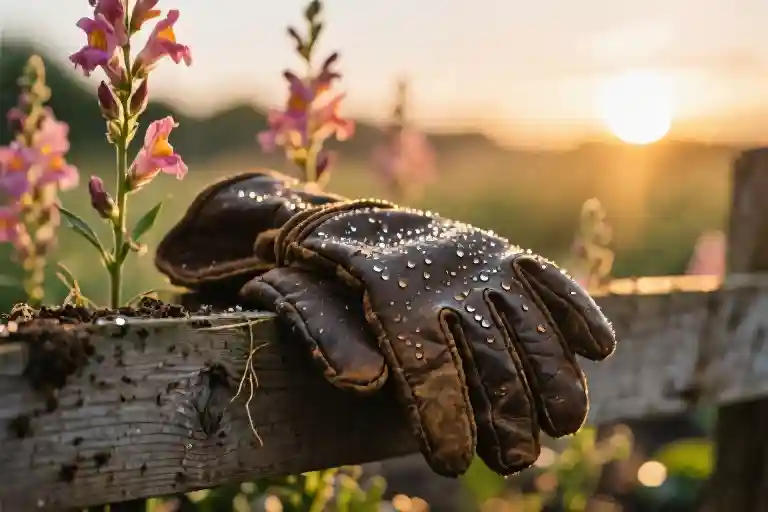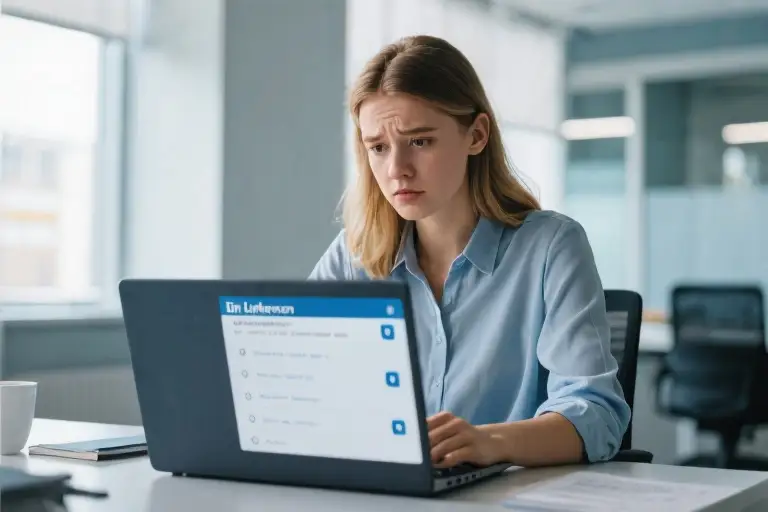The morning dew still clings to the snapdragons when Emily’s leather gloves first touch the irrigation valves. By 7am, her fingers have already traced the stems of every fuscia plant lining the wedding aisle, checking for wilted petals the bride would never notice. Fifty yards away, the orchard’s white tent glows under sunrise, empty chairs waiting for guests who’ll admire the floral arrangements without wondering whose hands shaped them.
This disconnect between creator and consumer defines Emily’s gardening career. Since April, she’s been the invisible architect behind countless romantic moments at this orchard wedding venue. The work requires pre-dawn precision – adjusting zinnia heights to photograph perfectly, testing soil pH to ensure roses peak at 4pm ceremonies. Her reward comes in stolen glimpses: a bride’s fingertips brushing marigolds, a groom pocketing a blossom from the boutonniere tray she prepared.
Most horticulture careers begin differently. Emily’s started at fifteen with a windowsill herb garden that stubbornly refused to thrive. While classmates saved for concert tickets, she spent allowance money on wilted discount plants from the grocery store, determined to nurse them back to health. The failures piled up – a basil plant drowned in overaffection, a lavender casualty of insufficient light. But each small victory (the aloe vera that survived winter, the mint that overtook its pot) fed an obsession that retail jobs couldn’t contain.
There’s poetry in how she measures progress now: no longer by the plants she keeps alive, but by the moments they facilitate. The weight difference between watering cans at the garden center and the industrial hose she wrestles through orchard rows. The satisfying crunch of soil under work boots instead of the squeak of sneakers on supermarket tile. Most meaningfully, the transition from advising indifferent customers (‘No, that succulent won’t thrive in your windowless bathroom’) to collaborating with florists who speak her plant language.
Yet for all the professional growth, some realities remain unchanged. Emily still arrives home with dirt under her nails, still frets over weather reports, still loses plants to unexpected frosts. The wedding guests see only the Instagrammable results – never the 4am panic when deer trample the peonies, nor the strategic placement of potted hydrangeas to hide bald patches in the lawn. This selective visibility haunts many horticulture careers; the more flawless the garden appears, the more successfully the labor disappears.
What the orchard has given her, beyond fair wages and creative freedom, is the right to claim ownership. When couples rave about the flower arches, Emily no longer bites back the words ‘I grew those.’ Her gloves, crusted with yesterday’s mud and this morning’s dew, carry the evidence of real work that precedes every seemingly effortless beauty. The contrast between her sunrise labor and the sunset celebrations isn’t irony – it’s the unspoken contract of all service professions. Someone must wake before dawn to make the magic, then vanish before the applause begins.
The Origin of Dirty Gloves: A 15-Year-Old’s Windowsill Experiments
The leather gardening gloves Emily wears now—stiff with dried mud and frayed at the fingertips—bear little resemblance to the pristine pink rubber pair she bought with babysitting money at fifteen. Those first gloves stayed embarrassingly clean for months, more costume than tool, while she killed three lavender plants in succession on her bedroom windowsill. The failures left her with a shoebox of brittle plant corpses she called her ‘herbarium of shame,’ each specimen labeled with cause of death: overwatering, spider mites, or the mysterious ‘just gave up.’
What saved her from abandoning gardening altogether was a $2 packet of Plumbago auriculata seeds—common blue plumbago—from a clearance bin at the local hardware store. Unlike the temperamental lavender, this sprawling shrub tolerated her erratic watering schedule and thrived despite being planted in a repurposed yogurt container. When the first true leaves unfurled, she pressed her nose against them, inhaling the faint green scent that would become her personal metric for success. That single surviving plant became the control group for all her subsequent experiments: if the plumbago lived, her methods were sound; if it wilted, she’d gone too far.
Her parents’ driveway soon became a graveyard of failed container gardens, but also a living classroom. She learned that succulents could drown in affection, that ferns were drama queens about humidity, and that roses demanded blood sacrifices (literally—she still has scars from early pruning attempts). The local library’s discard pile supplied outdated gardening manuals where she discovered the golden rule: ‘Plants want to live. Your job is to stop helping them die.’
By sixteen, her windowsill had expanded to include a heat mat for seed starting, a grow light rigged from shop lamps, and a handwritten chart tracking each plant’s vital signs. The blue plumbago, now spilling over its fifth upgraded pot, became her tutor in patience—it took eighteen months to produce its first cluster of sky-blue flowers. When they finally appeared, she documented the event like a botanist discovering a new species: date, time, weather conditions, and a Polaroid taped into her increasingly battered notebook.
This was education by autopsy. Every dead plant taught her more than any textbook could—the white fuzz of powdery mildew, the telltale stickiness of aphid infestations, the despair of root rot’s blackened tendrils. She began rescuing discounted ‘sad plants’ from grocery store floral departments, treating them like ER patients: diagnose, triage, rehabilitate. Half died anyway, but the survivors—a lopsided orchid, a spider plant missing half its leaves—became her most cherished possessions.
What began as a hobby was hardening into something more compulsive. She spent rainy Saturdays deadheading imaginary flowers during movies, could identify common weeds by their juvenile leaves, and found herself staring at strangers’ landscaping with the critical eye of a connoisseur. The pink gloves split at the seams from overuse, replaced by tougher models from the gardening section where she’d eventually land her first real job. But that came later. For now, there was just a teenager whispering encouragement to a blooming plumbago, unaware she was also talking to her future self.
The Glass Greenhouse: Between Scanner and Soil
The transition from cash register to watering can wasn’t as romantic as Emily had imagined. At the garden center attached to the supermarket, tropical plants hung from steel beams under artificial lights that stayed bright long after sunset. She’d started as most teenagers do – scanning barcodes on potting soil bags and explaining for the twelfth time that day where to find the rosemary plants. The promotion to greenhouse attendant came with a 75-cent raise and a set of keys to the chemical cabinet.
Retail horticulture operates on peculiar contradictions. You’re surrounded by living things yet bound by dead rules. Emily could recite the pH requirements for hydrangeas but couldn’t explain why the store received shipments of poinsettias in July. She developed an encyclopedic knowledge of houseplant care that customers routinely ignored. “Just tell me which one looks expensive but won’t die before my mother-in-law visits,” a woman once demanded while tapping her credit card against the counter.
What the greenhouse gave in botanical diversity, it took away in autonomy. Corporate protocols dictated watering schedules down to the minute, regardless of whether the fiddle-leaf figs actually needed hydration. Pest control became a bureaucratic dance – she needed manager approval to apply neem oil even as spider mites colonized an entire shelf of calatheas. The worst days were when clearance stickers appeared on orchids that simply needed proper care, their roots suffocating in sphagnum moss packed too tight by some warehouse worker three states away.
Yet this fluorescent-lit purgatory taught Emily unexpected lessons. She memorized which customers would actually listen to care instructions (middle-aged men buying succulents, surprisingly) versus those who viewed plants as disposable decor (bridal shower organizers). She learned to diagnose root rot by scent and could spot mealybug infestations before they became visible. The greenhouse became her accidental classroom, its limitations forcing her to develop observational skills no YouTube tutorial could teach.
Most importantly, retail revealed the uncomfortable truth about ornamental horticulture – the plants people pay most for are often the ones they understand least. Those pristine white orchids? Dyed with injected pigment. The bonsai ficus? Doomed the moment it left the store’s humidity-controlled environment. Emily started keeping a private tally of how many plants she sold that would survive six months (about 1 in 8, if the receipts and subsequent customer complaints were any indication).
On her breaks, she’d walk to the loading dock where deliveries arrived. Through the chain-link fence, she could see an overgrown field where milkweed and goldenrod grew unchecked. The contrast stung – inside, she followed corporate mandates to keep plants artificially perfect; outside, nature thrived through neglect. That’s when she began smuggling cuttings home in her lunchbox, nurturing them in jam jars on her windowsill. These unauthorized rescues became her secret rebellion, their wild growth a silent promise that someday she’d work where plants were valued as more than inventory numbers.
The Orchard Liberation
Emily’s phone screen was smudged with potting soil when she scrolled through her camera roll during the job interview. No traditional resume could capture what those images held: the progression of her apartment balcony transforming from a graveyard of wilted basil plants to a thriving jungle of monstera and peace lilies. The orchard manager squinted at a close-up of Emily’s hands cradling a rescued orchid in bloom—the same hands that now nervously adjusted her dirt-stained collar.
This wasn’t just career transition; it was emancipation. The supermarket greenhouse had been a glass-ceilinged purgatory where plants were commodities with barcodes. Here at the wedding orchard, each apple tree had a name and backstory. The ancient Gravenstein near the ceremony arbor needed special compost tea treatments. The Honeycrisp row demanded precise thinning for optimal sugar concentration. These weren’t inventory items but living collaborators.
Her defining moment came during a late-June wedding prep. The bride had requested “rustic elegance”—a phrase that meant different things to clients and horticulturists. Emily spent three dawns adjusting snapdragon spacing by half-inch increments, knowing the morning light would hit the floral aisle at 11:17 AM. When the photographer gasped at how the blossoms seemed to glow around the bride’s train, no one noticed the gardener wiping sweat near the compost bins.
Professional horticulture revealed its own lexicon. IPM (Integrated Pest Management) wasn’t just a buzzword but a daily dance of introducing ladybugs before aphid populations surged. “Deadheading” transformed from a grim verb to an act of mercy, redirecting energy from spent blooms to new growth. Emily learned to read soil like a pharmacist reads prescriptions—the iron-deficient patches showing in yellowing hydrangea leaves, the nitrogen excess in overly lush but weak-stemmed roses.
The orchard’s rhythm rewired her understanding of time. Retail had been governed by shift schedules and quarterly sales targets. Here, seasons dictated urgency—apple blossoms didn’t care about human calendars when they needed pollination. She developed what old-timers called “dirt sense,” an intuition for when to water based on how the morning dew clung (or didn’t) to spiderwebs between pear trees.
Wedding guests never saw the 4 AM frost patrols in early spring, when Emily and the team lit smudge pots to protect tender buds. They admired the floral chuppah without knowing each camellia petal had been individually checked for blemishes. This invisibility no longer felt like erasure but like backstage access to nature’s secrets—the gardener’s version of insider trading.
What surprised Emily most wasn’t the physical demands (though her knees developed permanent impressions from kneeling pads), but the psychological shift. In retail, every plant’s fate was someone else’s decision. Here, she became accountable to the plants themselves—the gnarled old cherry tree that needed extra winter pruning, the temperamental dahlias that refused to thrive near the parking lot. Their needs created a compass no customer complaint could override.
The orchard’s wedding business added another layer: translating human emotions into horticulture. “We want it to feel romantic” meant underplanting the arbor with blush-colored astilbe. “Budget-conscious” signaled switching from rare peonies to voluptuous garden roses. Emily began recognizing returning clients not by faces but by their plant preferences—the mother-of-the-bride who always touched the lavender for luck, the groom who insisted on blue delphiniums to match his grandmother’s brooch.
Her supermarket experience unexpectedly proved valuable. Understanding how customers interacted with plants helped anticipate wedding party behavior—the bridesmaid who’d inevitably lean on the ceremonial apple tree for Instagram photos needed that trunk wrapped with invisible protective mesh. Those years of explaining care instructions to indifferent shoppers now helped her draft bullet-pointed guides for clueless wedding planners.
Rain transformed from a retail nuisance to a sacred variable. Emily learned to track weather patterns like a sailor, knowing a well-timed afternoon shower could make sweet peas perk up before evening ceremonies while unexpected downpours required emergency cover protocols. She developed what she called “plant poker face”—the ability to calmly remedy a slug-ravaged begonia border while panicked event coordinators hyperventilated.
Some mornings, pulling on those crusted gloves, she’d pause to inhale the orchard’s particular perfume—damp earth, ripe fruit, and the faint metallic tang of irrigation systems. The scent of decisions made and consequences shouldered. No time clock to punch, just plants waiting to testify to her choices. That was the real job offer she’d accepted—not wages or benefits, but the terrifying privilege of being heard by leaves and roots.
The Invisible Curriculum: A Gardener’s Skill Tree
The leather gloves tell only half the story. What Emily’s dirt-crusted fingertips conceal is a complex taxonomy of competencies that separate hobbyists from professional horticulturists. This unspoken curriculum evolves through broken stems and sunburnt necks, through midnight pest invasions and brides who demand peonies in September.
Hard Skills: Beyond Watering Cans
Soil Literacy begins with pH test strips but graduates to tongue-testing clay content when equipment fails before dawn wedding setups. Emily learned to distinguish Fuscia magellanica’s preferred acidity through three seasons of trial and error, her notebook filled with sketches of leaf discoloration patterns.
Plant Pathology transforms from textbook knowledge to visceral experience when scale insects invade the zinnia beds forty-eight hours before a $75,000 wedding. The real test isn’t identifying the pests—it’s calculating whether organic neem oil will work fast enough or risking synthetic sprays that might leave residue on chiffon dresses.
Color Theory becomes concrete when translating “romantic but not too pink” into specific geranium cultivars. Emily arranges snapdragons by hexadecimal color values now, visualizing how morning light will transform #FFB6C1 into #FF69B4 as the ceremony progresses.
Soft Skills: The Language of Leaves
Client Whispering means decoding statements like “make it look expensive” into actionable plans. This might involve strategically placing $12 garden roses behind $3 baby’s breath to create depth illusions, or convincing grooms that ivy-covered arches photograph better than their NFL team colors.
Microclimate Mapping requires memorizing how shadows crawl across the orchard from April to October. Emily knows precisely which hydrangea bush will catch golden hour light during June weddings, and which dahlias will wilt if placed near the champagne fountain’s humidity.
Crisis Algebra emerges when calculating which problems actually need solving. A missing centerpiece orchid warrants emergency greenhouse calls; a bride’s last-minute color scheme change gets accommodated by strategically placed lighting gels rather than replanting entire beds.
This skill ecosystem thrives in paradox—the more Emily masters scientific precision, the better she becomes at creating effects that feel effortlessly natural. Her hands now make decisions her conscious mind can’t always articulate, fingers assessing soil moisture while her attention handles a bride’s floral panic. The true expertise lies not in the techniques themselves, but in knowing when to discard them for something messier and more alive.
The Parallel Worlds of Retail and Soil
The cash register at Green Thumb Garden Center beeped for the eighth time that hour as Emily scanned another flats of petunias. Her fingers, once eager to examine each plant’s root system, now moved with mechanical efficiency. The contrast between this fluorescent-lit purgatory and the orchard where she now spent her mornings couldn’t be sharper – like comparing supermarket tomatoes to heirlooms fresh from the vine.
Three Dimensions of Difference
- Compensation:
- Retail: $12.50/hour with 15% discount on dying houseplants
- Orchard: $18/hour plus wedding tips (“The bridesmaids tipped $50 last Saturday”)
- Occupational Hazards:
- Retail: Repetitive stress injury from scanning, chemical burns from pesticide sprays
- Orchard: Sunburned neck, thorn scratches that leave tracery like garden maps
- Autonomy:
- Retail: “Rotate the succulents every Thursday” (manager’s memo)
- Orchard: “Move the zinnias three inches west – the light’s better there” (Emily’s call)
What fascinates me isn’t just the wage gap, but how these environments shape one’s relationship with plants. At the garden center, Emily became fluent in the language of UPC codes and shrink-wrap. The orchids she lovingly treated for mealybugs would disappear into strangers’ cars, their fate as unknowable as library books after checkout. Now, she tracks the life cycle of each snapdragon from seedling to wedding altar to compost pile – a complete biography in chlorophyll.
Clients reveal the chasm between these worlds too. Retail customers asked “Will this orchid rebloom?” while fidgeting with car keys. Wedding planners demand “Make sure nothing wilts between 4:15 and 4:30 PM during photos.” Both ultimately view plants as temporary props, but the orchard at least acknowledges their living essence through professional care.
Yet there’s poetry in this tension. Those supermarket years taught Emily to diagnose root rot from twenty feet away, to spot spider mite infestations before they became visible. The orchard refined these skills into something resembling artistry – knowing precisely how much to water peonies so they’ll peak at cocktail hour. What seemed like divergent paths were actually concentric circles, each rotation adding depth to her craft.
“I just need it alive for my wedding day” isn’t cynicism; it’s the raw material from which professional horticulturists build sustainable beauty. The true skill lies in meeting that demand while secretly ensuring the centerpieces will thrive long after the last champagne flute is cleared – Emily’s quiet rebellion against disposability.
The Dirt Under Her Fingernails
The leather gloves sit on the porch railing now, cracked with dried earth and stiff from morning dew. Emily peels them off finger by finger, revealing calluses that tell better stories than any resume could. These hands have become something new – not just tools for tending, but maps of a life deliberately chosen.
Three years ago, those same hands fumbled through plastic-wrapped succulents at the garden center, scanning barcodes for customers who’d never ask how to keep the plants alive. Now they test soil pH before dawn for brides who’ll never know her name. The dirt stays under her nails these days not because she can’t wash it out, but because she won’t.
Resources for Rooting Yourself
For those feeling trapped behind cash registers or office desks, here are pathways to the soil:
- Apprenticeship Programs (ATTRA’s nationwide listings)
- Urban Farm Incubators (Like Stone Barns Center’s training)
- Botanical Gardens (Volunteer-to-career pipelines)
This isn’t a manifesto about quitting your job. It’s about noticing – really noticing – who grows the roses in restaurant vases, who keeps the orchard trees heavy with fruit for Instagram photos. The hands that craft our pastoral fantasies are rarely in the frame.
When you walk through a wedding venue tomorrow, or buy strawberries at the farmers’ market, pause at the edge of the visible. That flawless peony didn’t bloom by accident. Somewhere before sunrise, someone checked for aphids and adjusted the irrigation, someone whose expertise gets called ‘unskilled labor’ on tax forms.
The ultimate luxury isn’t organic produce or flower arches – it’s pretending these things manifest through magic rather than human hands. Emily’s gloves hold that contradiction: the dirt we pay to avoid, transformed into the dirt we pay to admire. Who gets to decide which earth is precious, and which is merely dirty?





